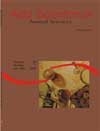<b>Inclusion of cassava waste meal inclusion in broiler diets</b> - DOI: 10.4025/actascianimsci.v30i2.4680
Keywords:
alternative feedstuff, economic evaluation, birds, carcass, performance
Abstract
The objective of this work was to evaluate performance, economic viability and carcass traits of broilers fed with diets containing five inclusion levels (0.0; 7.5; 15.0; 22.5 and 30.0%) of cassava waste meal (FVM). Three hundred sixty one-day-old pullets were used, distributed in a randomized block design experiment with five treatments and six replications, containing twelve birds per box. The parameters evaluated were feed intake, weight gain, feed-to-gain ratio, feeding costs, gross income, gross margin and profitability. Two broilers per replication were slaughtered at 42 days in order to evaluate the weights of carcass, main cuts, offal and total fat for carcass yield determination and to calculate the percentages of cuts, total fat and offal in relation to live and carcass weights. The chest and thigh + drumstick were deboned and their yields calculated in relation to cuts, carcass and live weight. Shinbone color was evaluated. The evaluated performance and economic parameters show no effects from FVM levels. Gizzard weight and yield and shinbone color were linearly affected. Response to meat yield of thigh + drumstick was quadratic. Cassava waste meal can be incorporated in broiler diets in levels of 30%.Downloads
Download data is not yet available.
Published
2008-08-07
How to Cite
Freitas, C. R. G. de, Ludke, M. do C. M. M., Ludke, J. V., Rabello, C. B.-V., Nascimento, G. R. do, & Barbosa, E. N. R. (2008). <b>Inclusion of cassava waste meal inclusion in broiler diets</b> - DOI: 10.4025/actascianimsci.v30i2.4680. Acta Scientiarum. Animal Sciences, 30(2), 155-163. https://doi.org/10.4025/actascianimsci.v30i2.4680
Issue
Section
Nonruminant Nutrition
DECLARATION OF ORIGINALITY AND COPYRIGHTS
- I Declare that current article is original and has not been submitted for publication, in part or in whole, to any other national or international journal.
The copyrights belong exclusively to the authors. Published content is licensed under Creative Commons Attribution 4.0 (CC BY 4.0) guidelines, which allows sharing (copy and distribution of the material in any medium or format) and adaptation (remix, transform, and build upon the material) for any purpose, even commercially, under the terms of attribution.
Read this link for further information on how to use CC BY 4.0 properly.
0.9
2019CiteScore
29th percentile
Powered by 








































